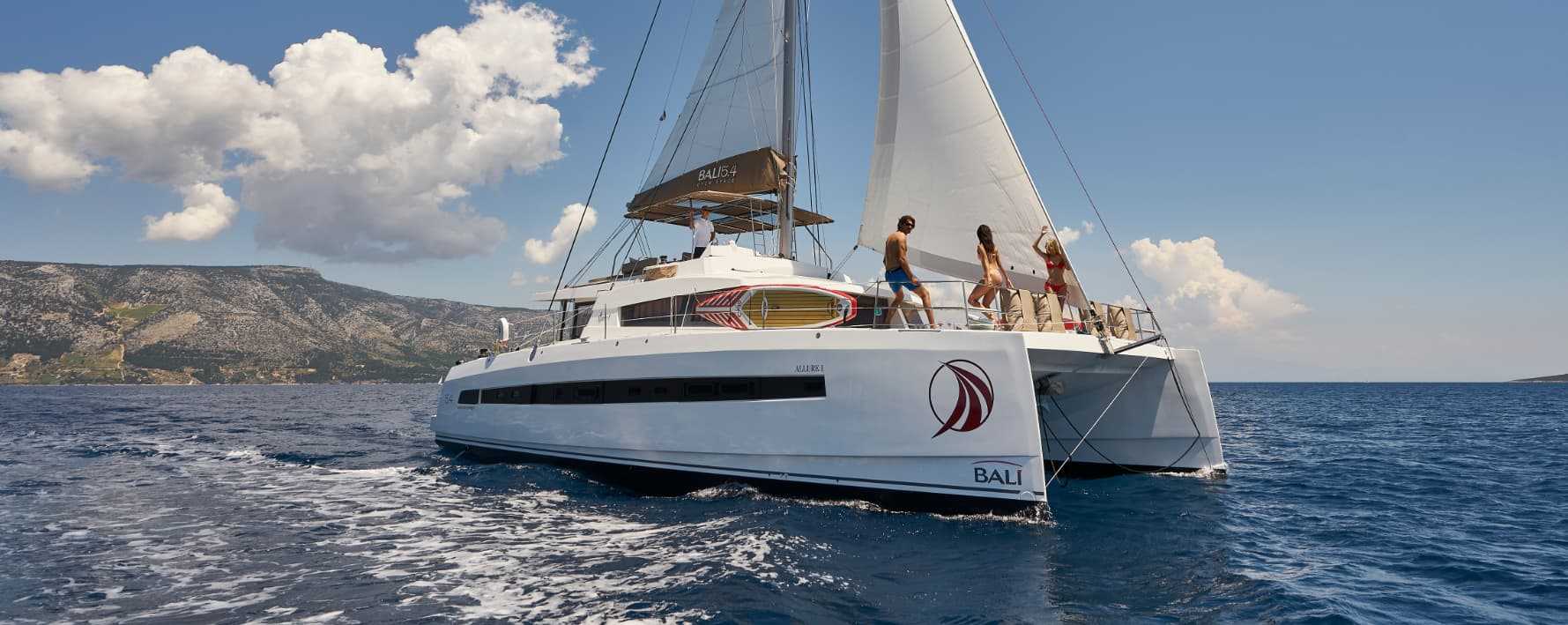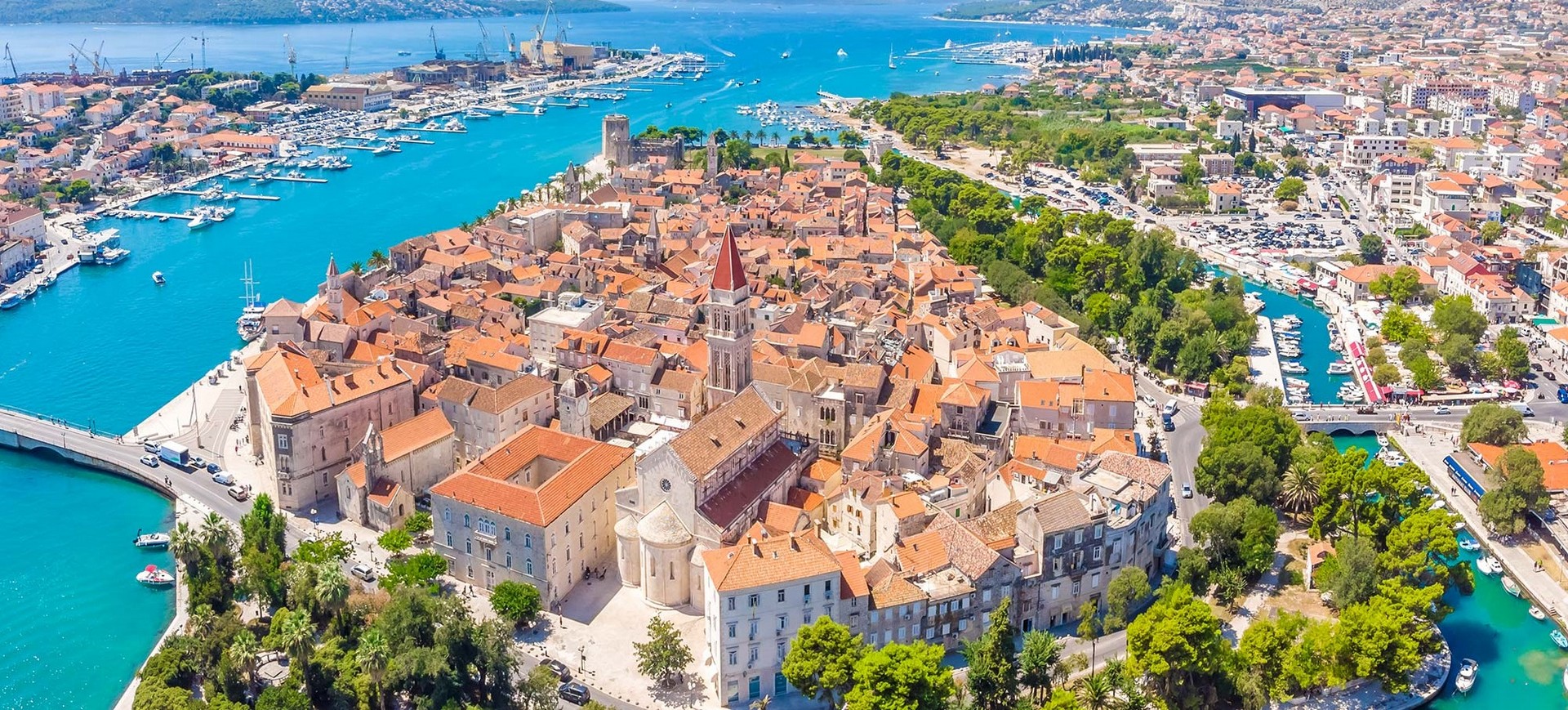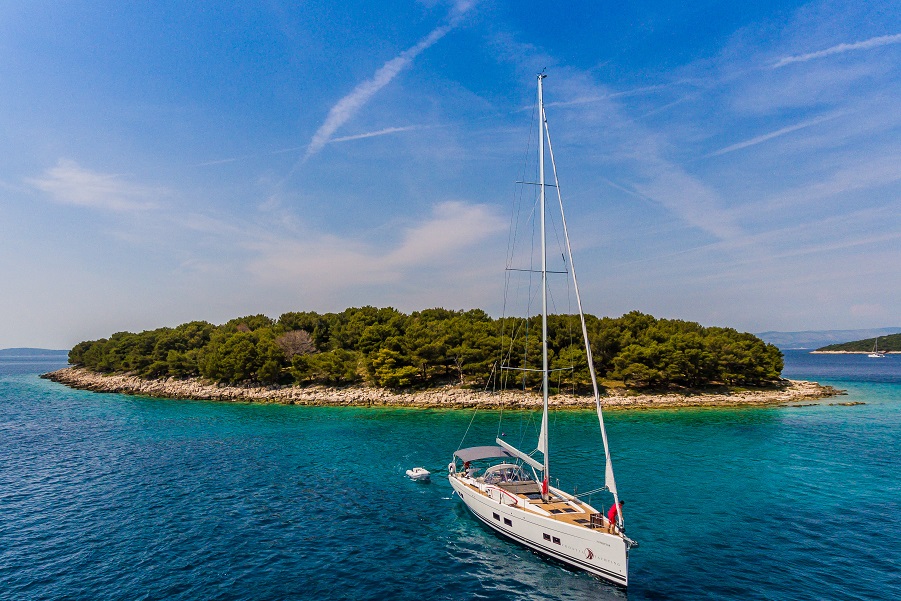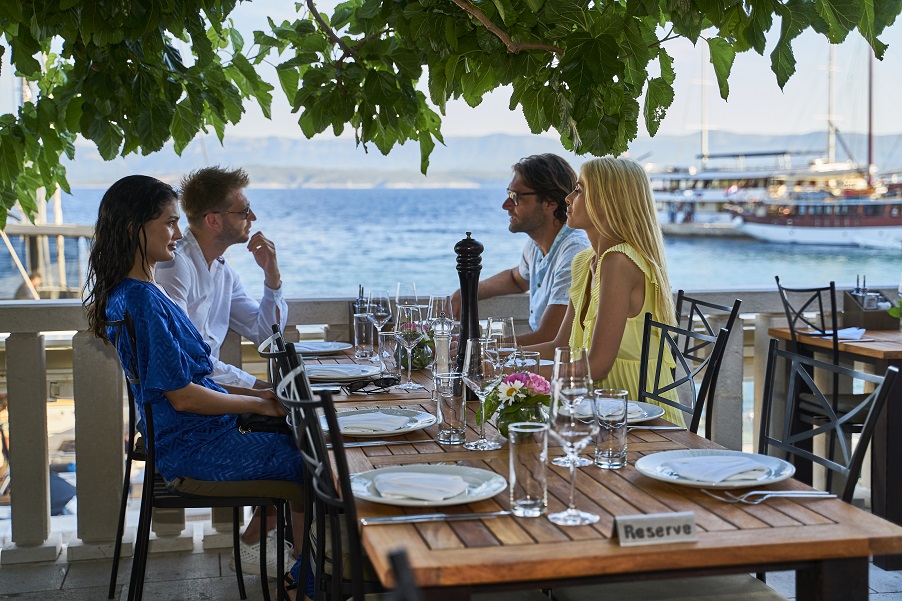Trogir: Your Foolproof Guide this UNESCO Town

Table of Contents
The magical museum-town of Trogir is a must-visit gem just outside of the better-known Split. Set on the shimmering Adriatic Coast within arm’s reach of Split Airport, Trogir’s small but mighty UNESCO-protected old town captivates travelers interested in vibrant history, where ancient buildings connect with twisted cobblestone alleyways that take travelers on an adventure through yesteryear.
Trogir is no stranger to today’s tourists, who have uncovered this jewel as a summer hotspot on their Croatian holiday. From posh sailors to budget backpackers, Trogir has revealed itself as a town with something to offer all walks of life. We’re bringing you the best of what Trogir has to offer, no matter what your Croatian vacation entails.
Trogir History
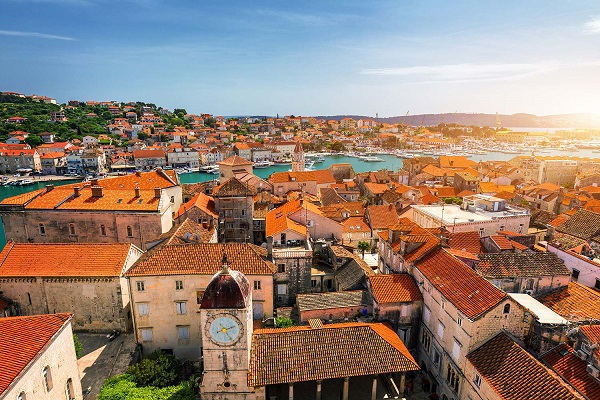
To really get a feel for Trogir, it’s best to get in tune with its history, which spans back to the 3rd century BC! Well, that’s at least when the settlement Tragurion was founded by Greeks from Vis, though archaeological research has shown that it actually dates back to prehistory. The Greeks, however, were responsible for developing the Tragurion settlement into a major port, thus bringing Trogir to life.
Roman historian Pliny the Elder mentioned Trogir-Tragurium as a Roman city in the 1st century with an important port and state granary. However, with the fall of the Western Roman Empire, Trogir became part of the Byzantine Empire, followed by many rulers over the next 1,400 years - namely, Croatians, Normans, Venetians, and Bosnians. Trogir thrived from the 13th to 15th centuries, when it witnessed its social, economic, cultural, and artistic power peak. The first pharmacy in Croatia is said to have opened in Trogir back in 1271! During this time, local masters and artists also left their mark on the town, which is still visible on the facades of buildings, stone sculptures, wood, and canvas today. The influence of Venice is especially felt in Trogir’s architecture.
Trogir saw a decline during the 17th and 18th centuries due to threats from the Turks, which resulted in most funds spent on fortifying the city. In addition, a quick French rule introduced several changes in the life of the town, especially in literacy, economy, agriculture, and health. Unfortunately, the city walls were torn down for these reasons, and Trogir began to lose its appearance as a fortified city.
Austrian rule in Trogir lasted from 1814 to 1918, when many dilapidated buildings and churches were demolished, forcing part of medieval Trogir to be lost. Trogir was then part of the new Yugoslav state in 1920, which saw the construction of new public buildings and political turmoil.
Italy occupied Trogir during World War II until it became part of the People’s Republic of Yugoslavia, when the city developed a strong shipbuilding industry and noticed its tourism appeal. Once the independent state of Croatia was proclaimed, Trogir could not escape the tracks of tourists, especially after it was designated a UNESCO World Heritage site in 1997.
What to see in Trogir?
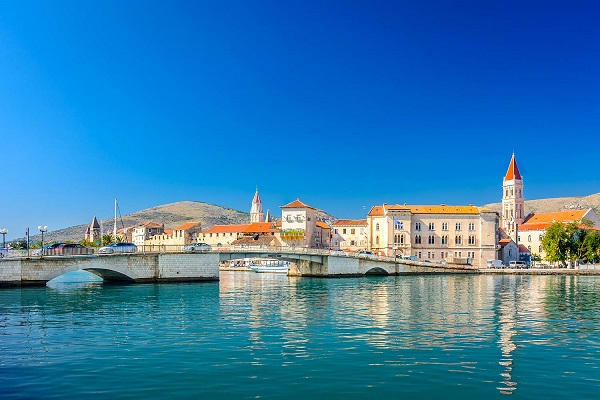
City Gate: Trogir’s old city walls were built between the 13th and 14th centuries, part of which is still visible today. But what you’ll likely take notice of first is its North City Gate, the main entrance to the medieval city. The North City Gate is located in the northern part of the town, first built in a Romanesque style around 1660. The gate you’ll witness today is thanks to a revamp in 1763 when a 15th-century statue of St. Ivan Trogirski, the patron saint of Trogir, was placed on top. Consider this your starting point to exploring one of Europe’s best-preserved old towns.
St. Lawrence Cathedral: Through a maze of narrow alleyways, you’ll eventually meet St. Lawrence Cathedral, certainly one of Trogir’s most popular attractions. With construction beginning in 1213, this eye-catching Romanesque-Gothic landmark took over four centuries to build and saw the hands of several artists. Enter the gateway, or Radovan’s portal, to experience one of the most important monuments of this art period created by the meticulous hands of master sculptor Radovan. Another not-to-miss attraction inside the cathedral is the Chapel and Baptistry of St John, built in 1468, and you must walk to the top of the belltower (built between the 14th and 16th centuries) for the best view of the bustling city loggia below!
City Loggia: The 14th-century City Loggia sits in front of the cathedral, once used as a courtroom but always a central meeting place for locals. As the loggia was completed during the Renaissance period, you’ll notice reliefs of St. John and St. Lawrence. However, the most prominent is the work of the famous Croatian sculpture Ivan Meštrović, who depicted Petar Berislavic of Trogir, a Croatian Ban who died fighting the Turks.
Ćipiko palace: Opposite the St. Lawrence Cathedral is Ćipiko palace, where Trogir’s noble family lived. The palace actually connects several buildings, with some construction dating back to Medieval and ancient times. Dalmatian nobleman Koriolan Ćipiko revamped the Venetian-Gothic-Renaissance palace in the 15th century by bringing in the best artists at the time - Nicola the Fiorentin, Andrija Alesi, and Ivan Dunković.
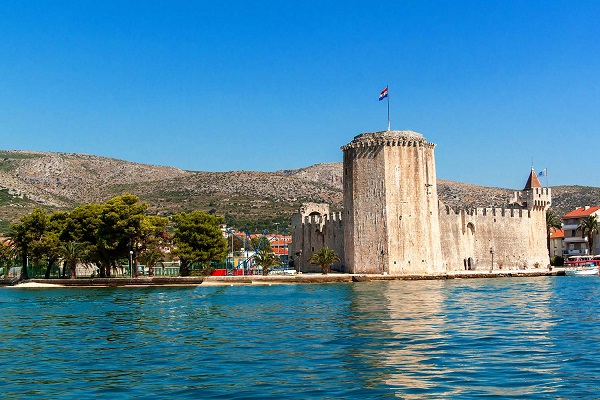
People watch on the Riva promenade: After sightseeing through the historic core, you’ll likely need a refreshment, and there is no better place than the waterfront promenade - the Riva. Secure a spot at one of the many cafes lining the coast, where you can sit back, sip, and watch the boats sail by. The lively promenade is home to mega-yachts in the summer, with street performers, artists, and locals enhancing the already magical scenery.
Kamerlengo: And at the end of the Riva? Meet Kamerlengo, a castle, and fortress built in the mid-15th century by Marin Radoj. You can climb to the top of the fortress for stellar views of the old town and bustling promenade, but we suggest you time your arrival with one of the many concerts or events held inside for a truly unrivaled experience!
St. Mark's Tower: Another defensive structure built in the 15th century is St. Mark’s Tower, as an extension of Kamerlengo fortress. This Renaissance-style fortress was constructed to defend Trogir from Turkish invasions, with 3-meter thick walls. Today, it is the Home of Dalmatian Music.
Markets: One of the most famous Trogir institutions used by locals today is the green market and fish market, the best way to truly embrace how locals live. Located just outside the North City Gate, you can find homemade meats and cheeses, fresh lavender, and loads of fruit and veg. And don’t miss out on the characters inside the fish market across the street, slinging their daily catch from the early morning hours!
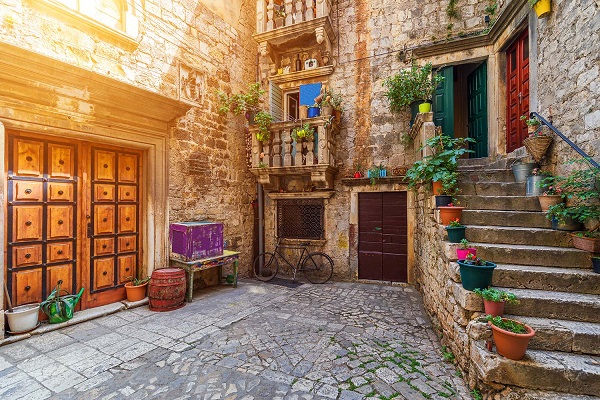
Get lost in the alleyways: But what really makes Trogir so unique? As we said at the beginning, it is a small but mighty town, and while you can explore it in half a day, you’ll be surprised by all the crafts you’ll find inside. For example, did you know that Trogir is home to an atelier named Gena, with 19th-century inspired suits that have been worn by Bernie Ecclestone, opera tenor Placido Domingo, and race car driver Sebastian Vettel? Or that you can find authentic red coral jewelry at Mišel, a family-owned business that has worked for over 100 years? To top it all off, indulge in Trogir’s sweet treat rafioli at the most famous gelateria and pasticceria in town - Đovani!
P.S.: You must not forget to visit Čiovo, an island connected to Trogir by a bridge that has turned into one of the most popular summer resorts in the area! And if you’re traveling by boat, you’ll get to experience two pearls of Čiovo island - Duga and Duboka, two bays that boast everything from rustic restaurants to trendy beach bars!
